
How Much Roundup Exposure Is Dangerous?
People can be exposed to glyphosate through agricultural and residential use, dietary intake, and environmental contact.
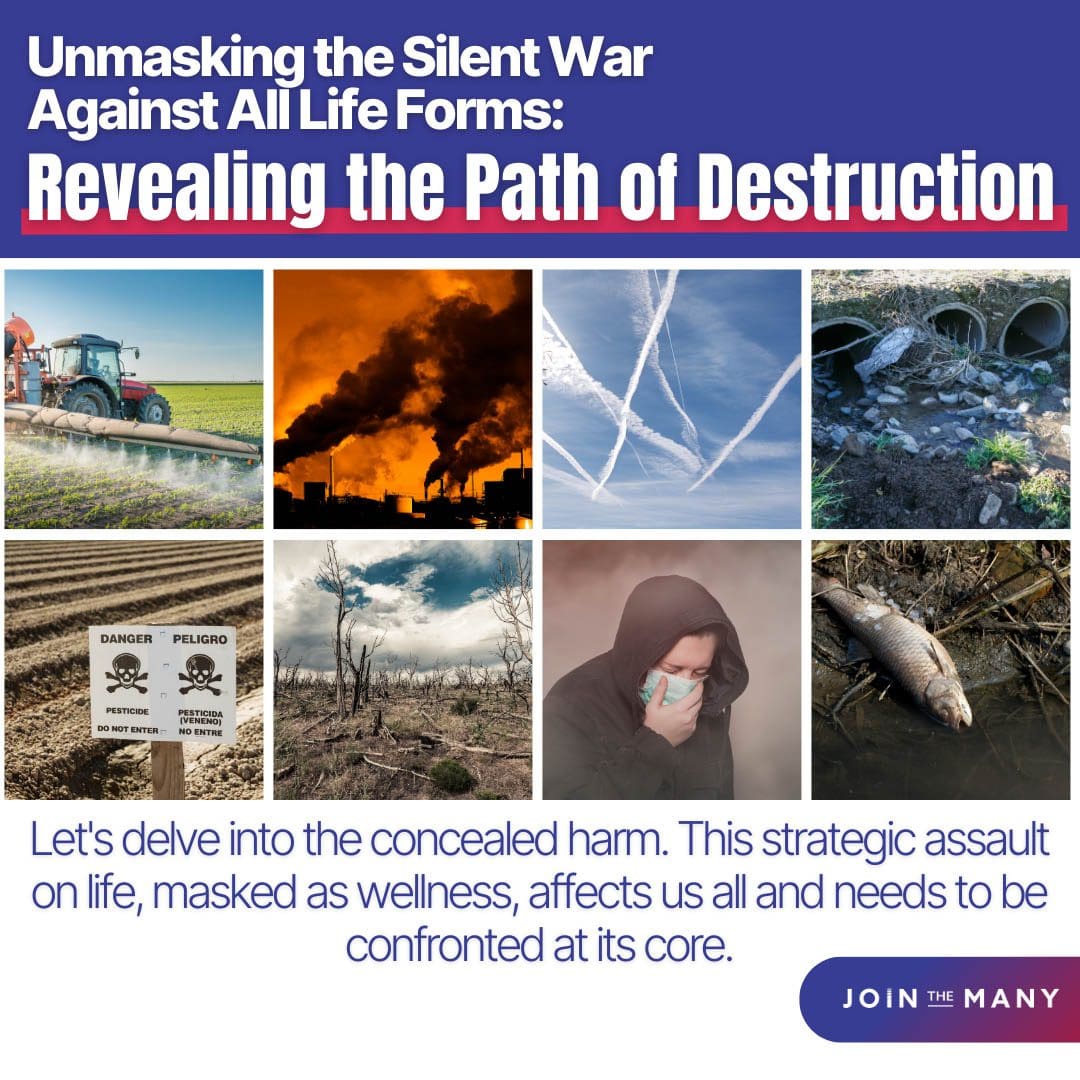
In the midst of the Roundup Cancer Lawsuit, it becomes imperative to delve into the intricacies of this situation, seeking a deeper comprehension of why it is paramount to hold corporations accountable. This case underscores the pressing need to reevaluate our moral and ethical compass within the corporate world. Decisions affecting countless lives should prioritize the well-being of all, even at the expense of reduced profit margins or diminished revenue.
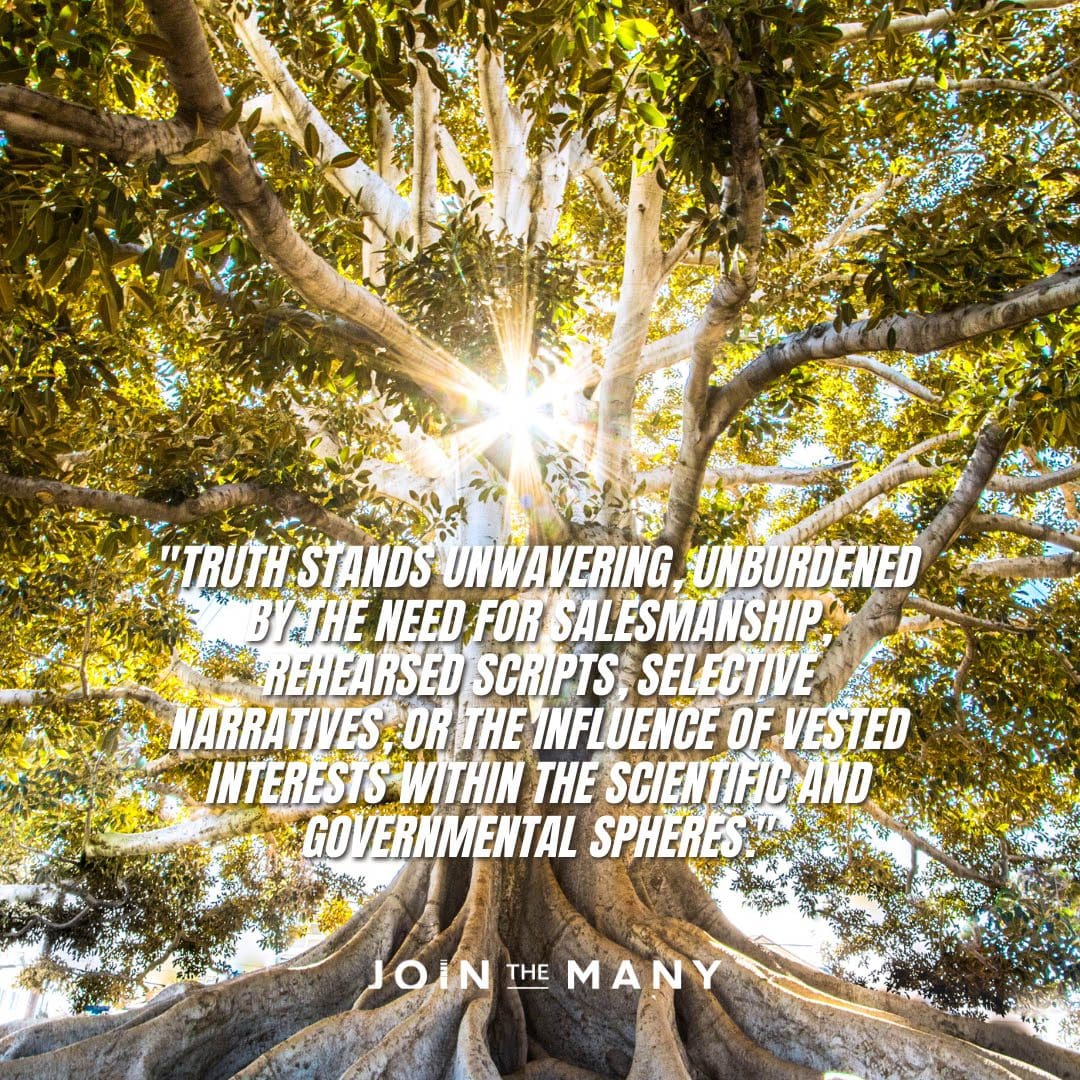
In a society where the very bedrock of health is compromised, how can we chart a path forward, ensuring the fulfillment of even the most fundamental human needs?
As we uncover that a significant portion of this contamination results from a well-orchestrated, covert operation masquerading as safety measures, how do we address the widespread global implications of this highly organized tactical endeavor?
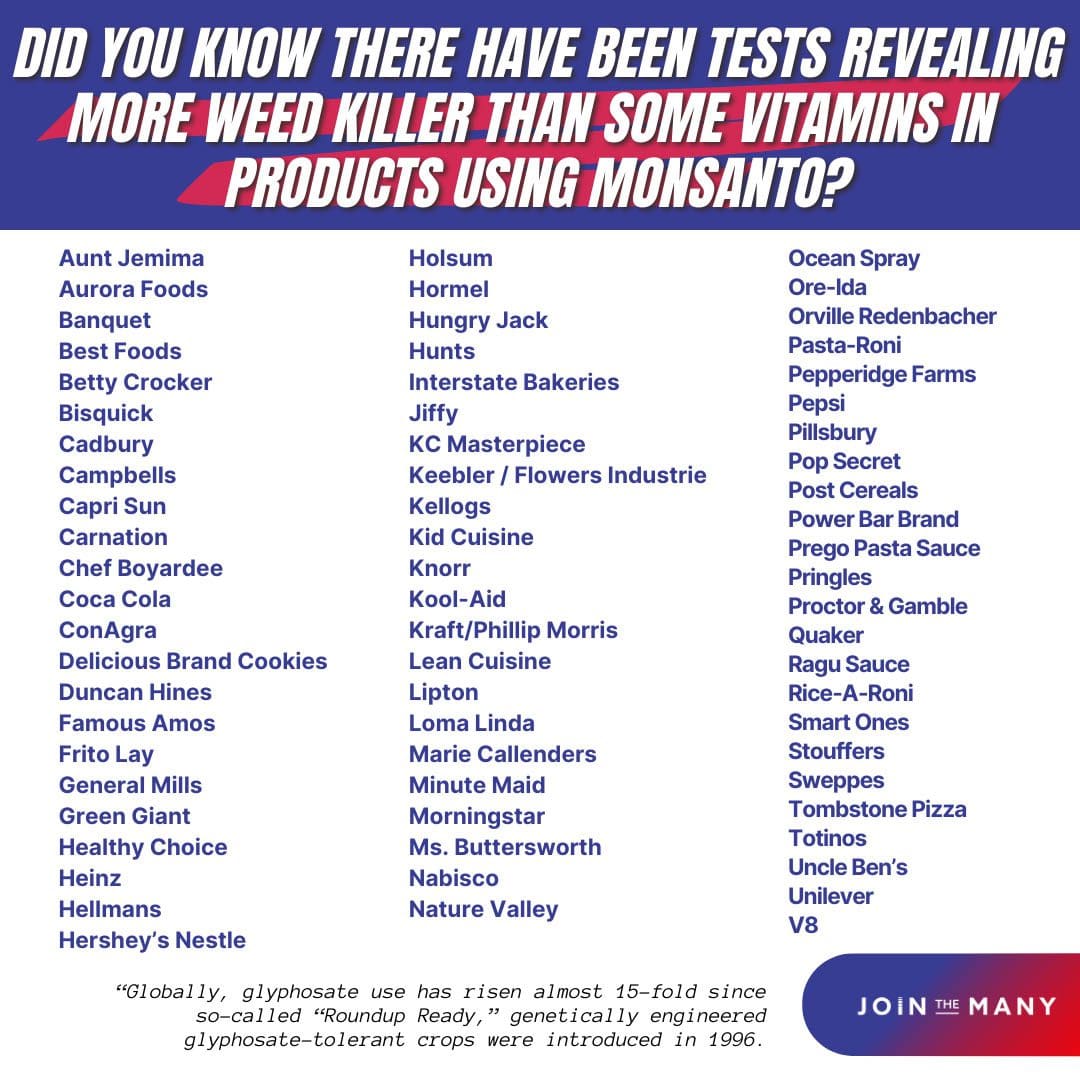

“Disease on a macro level is off the charts, and when you become more familiar with how the human body processes toxins, you begin to recognize how easy it is for us to fall ill.”
Reader Disclosure: Our intentions are rooted in helping to create real change. We recognize that many of today’s problems are simply the result of many, many decisions that were based within an older paradigm, where companies have done whatever they felt was necessary to increase profits while taking out competition – via putting others out of business or gobbling them up to positively impact stock value.
This exhaustively thorough web page will be continually updated as we build upon the growing knowledge base – pulling from research collected from the many good humans who’ve already drawn a line in the sand to help unravel this mess – while creating proactive solutions for the good of all.
→ Please bookmark, save, and share.
We’ve created an easy-to-use page navigation below – so you can click through to the sections you’d like to review, faster.
Each of the Roundup Lawsuit-related graphics within this web page was intentionally created so you can save and share to your social media profiles.
The mainstream media has their hands full keeping your attention on whatever distraction will get them the most attention, while these big entities with unlimited budgets to protect shareholder value will continue to do their best to minimize the issue – with the hopes of continuing business as usual, maintaining a positive brand image while growing Customer Lifetime Value and Shareholder Stock Price.
“If something doesn’t genuinely serve the well-being of our nearest and dearest, it’s a resounding ‘no’ from us.”
The ongoing Roundup lawsuit against Monsanto, now Bayer AG has unearthed a pressing concern that demands our immediate attention.
We are compelled to hold those responsible accountable for their actions and support all innocent victims. It is not only our moral duty but a necessity to prevent repeating the errors that led to this situation.
This responsibility extends to safeguarding the future, particularly for our children and the generations that will inherit this planet as its caretakers. We have arrived at a juncture where decisive action is imperative.

As we delve deeper into the revelations surrounding toxic chemicals in our environment, it becomes increasingly evident that corporate avarice and negligence have prevailed for far longer than most people currently alive. These major chemical companies have exploited existing regulatory gaps, perpetually producing slightly altered chemicals under new patents and trademarks.

This strategy allows them to repackage and reintroduce these substances into a wide array of consumer products to maximize shareholder value.
Customer lifetime value reigns supreme in their business model, and they have mastered the art of creating problems and then marketing solutions that merely alleviate symptoms, without addressing the root causes. This systemic manipulation cries out for cessation.
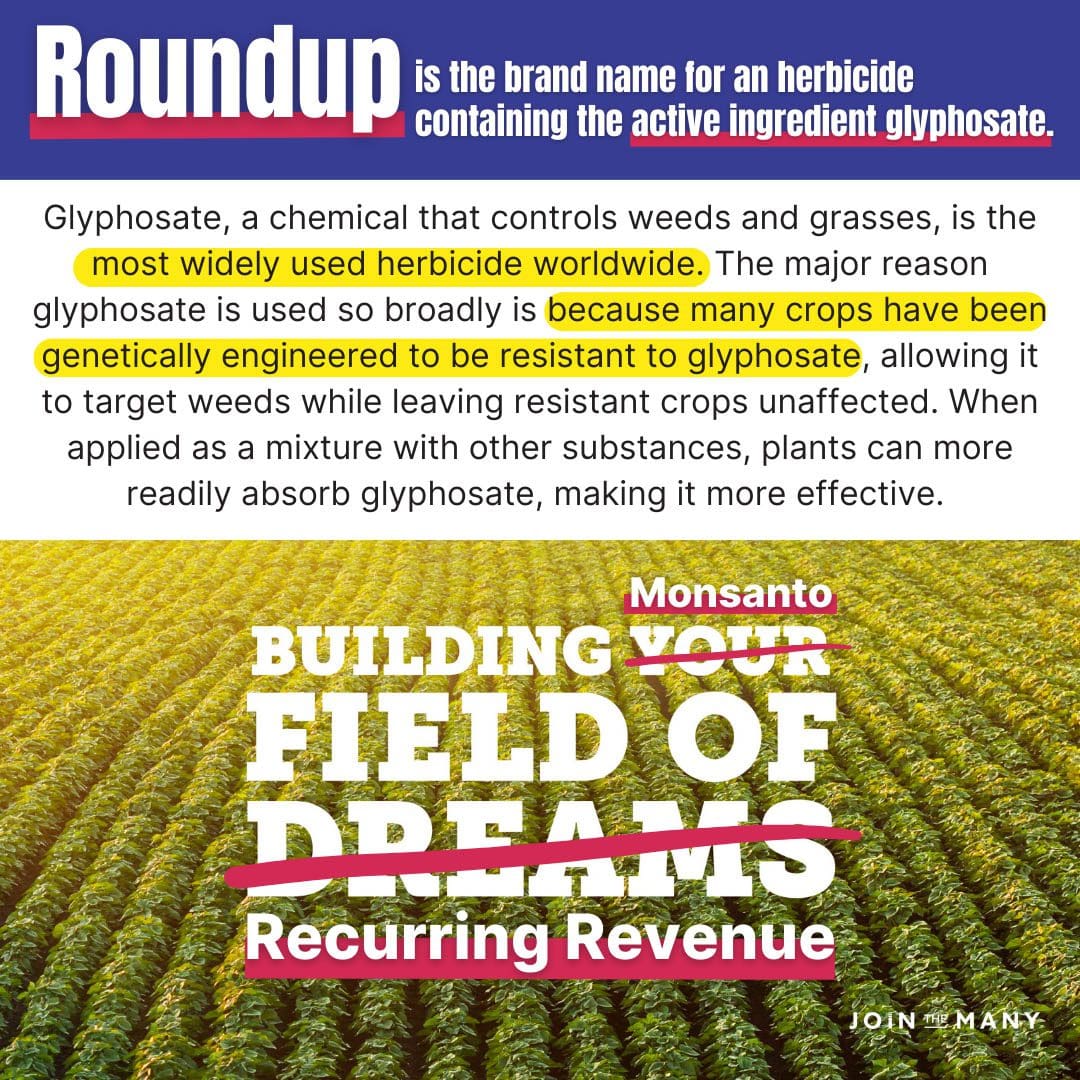
The World Health Organization’s International Agency for Research on Cancer (IARC) ruled glyphosate a carcinogen. The IARC said that along with other Monsanto chemicals Roundup could cause non-Hodgkin lymphoma.
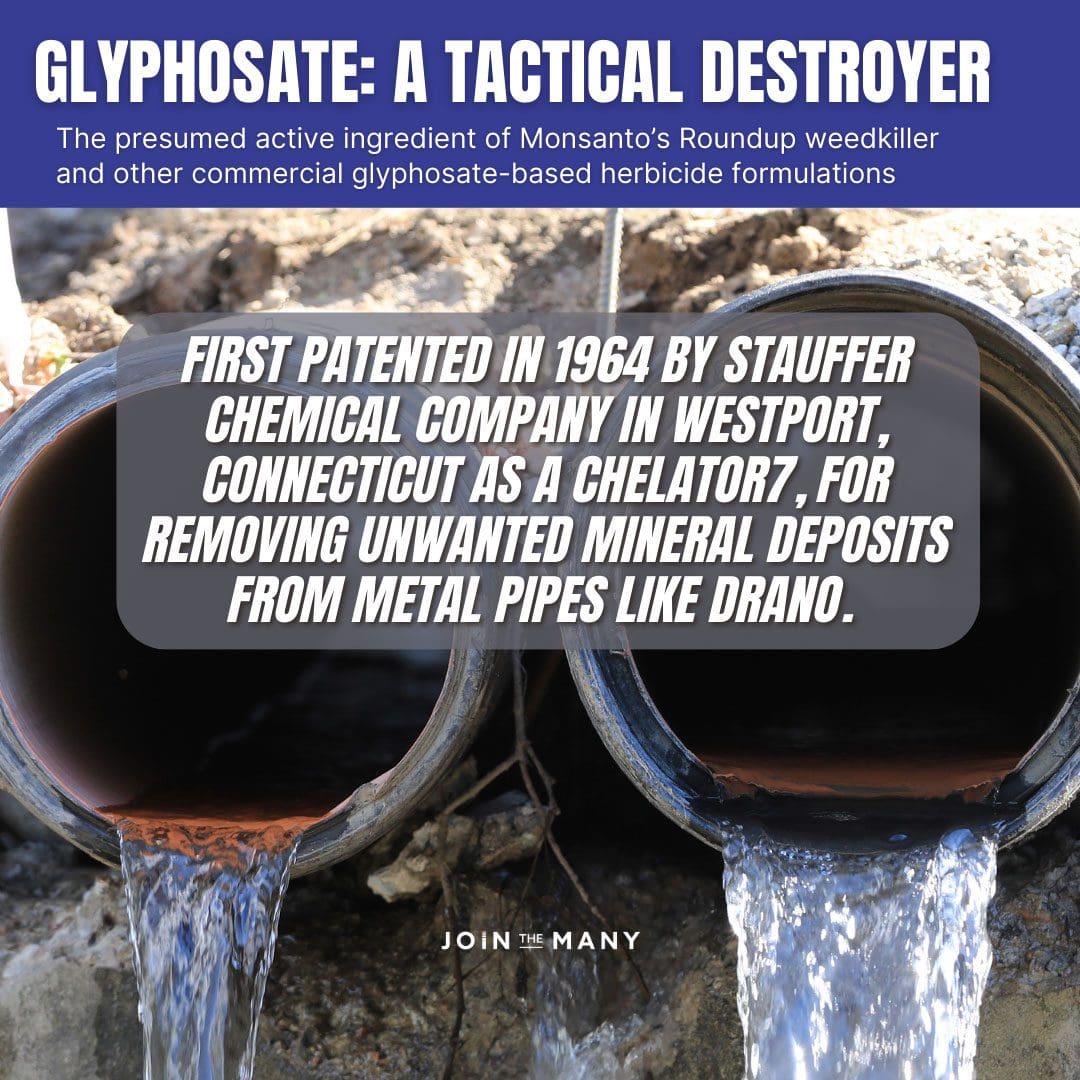
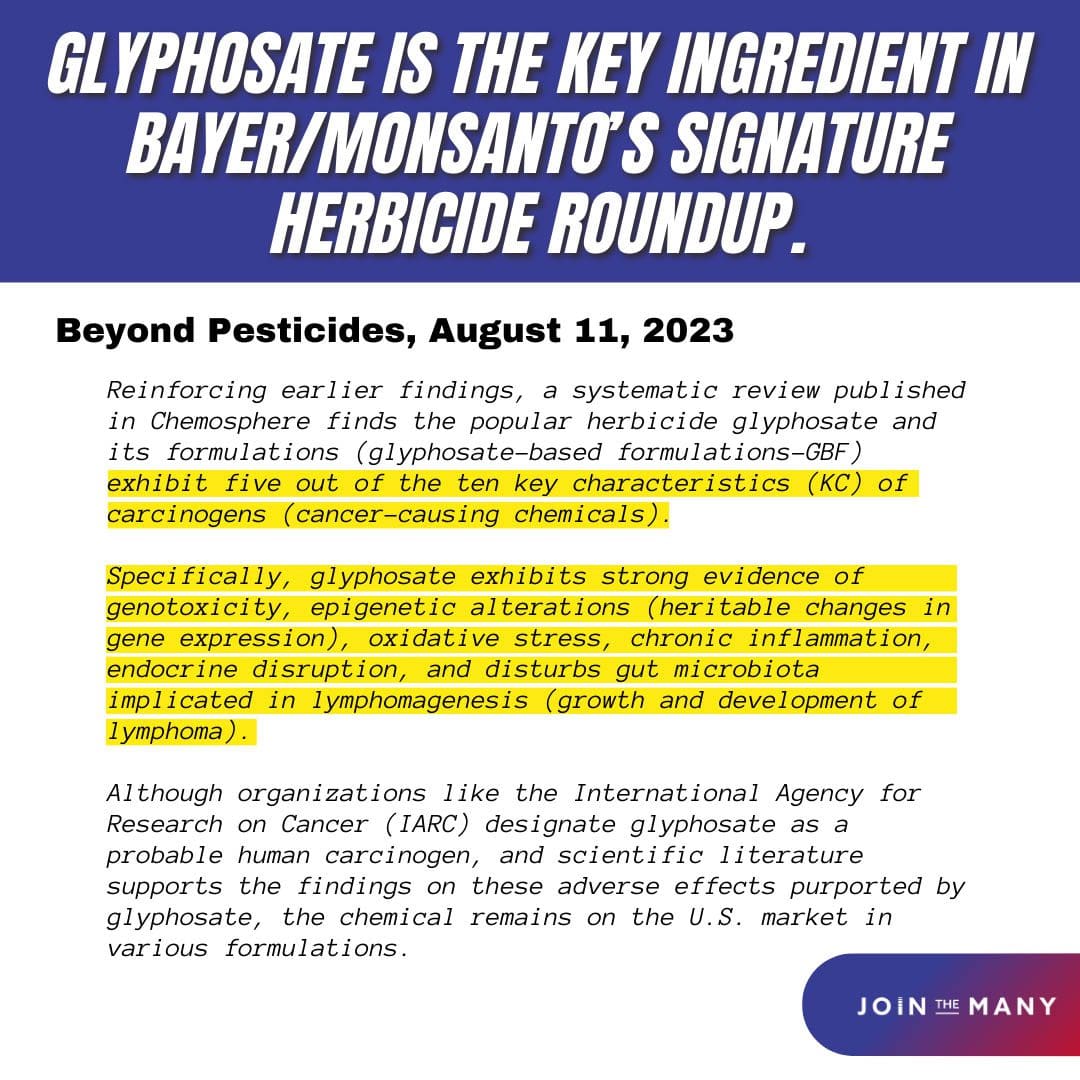
The mass spraying of glyphosate has led to the explosion of resistant weeds, which have evolved to survive despite being sprayed. Already, weeds resistant to the herbicide are found on half of all American farmers’ fields and are present on upward of 100 million acres of cultivated cropland.

At present, there are more than 50k plaintiffs suing Bayer, claiming glyphosate caused cancer.
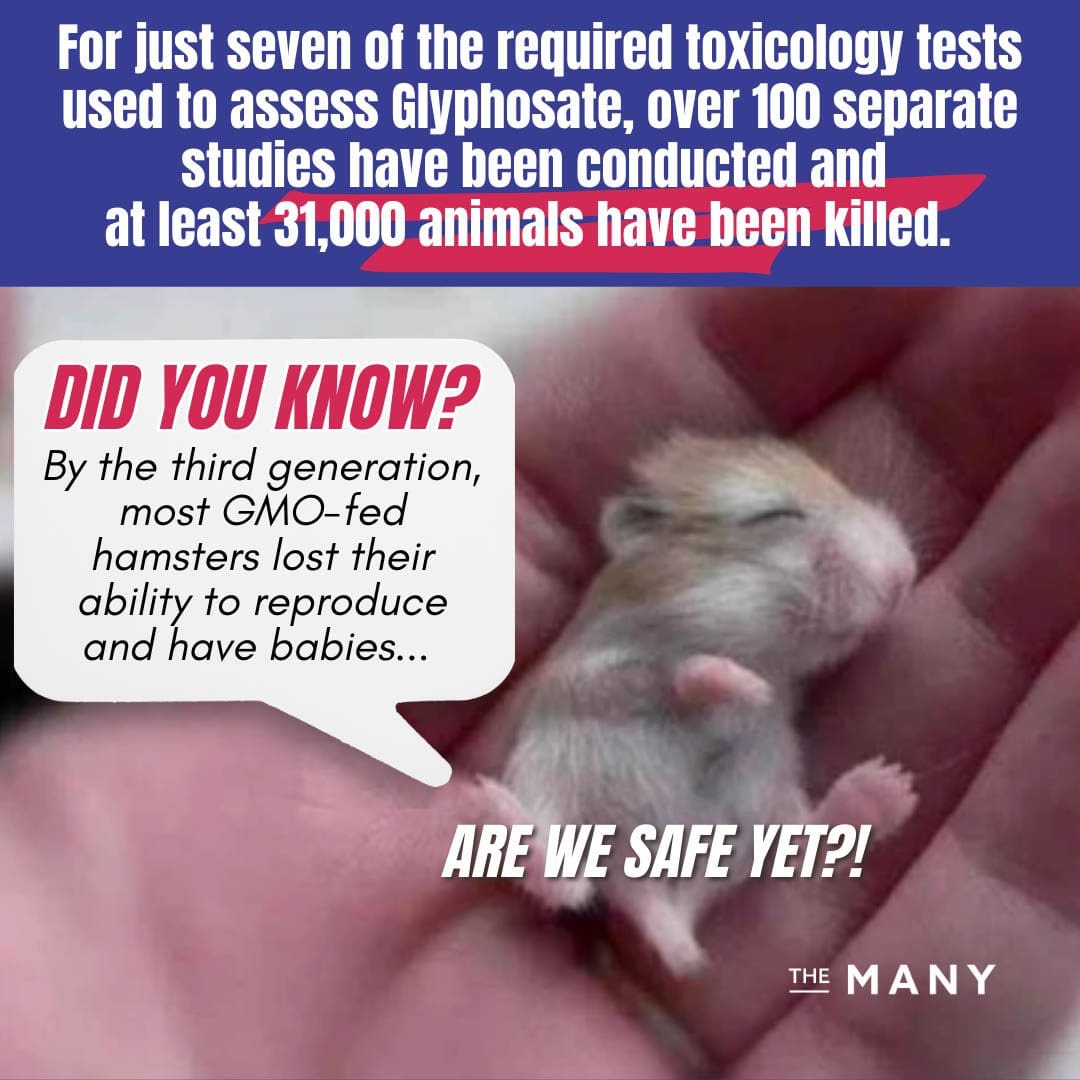
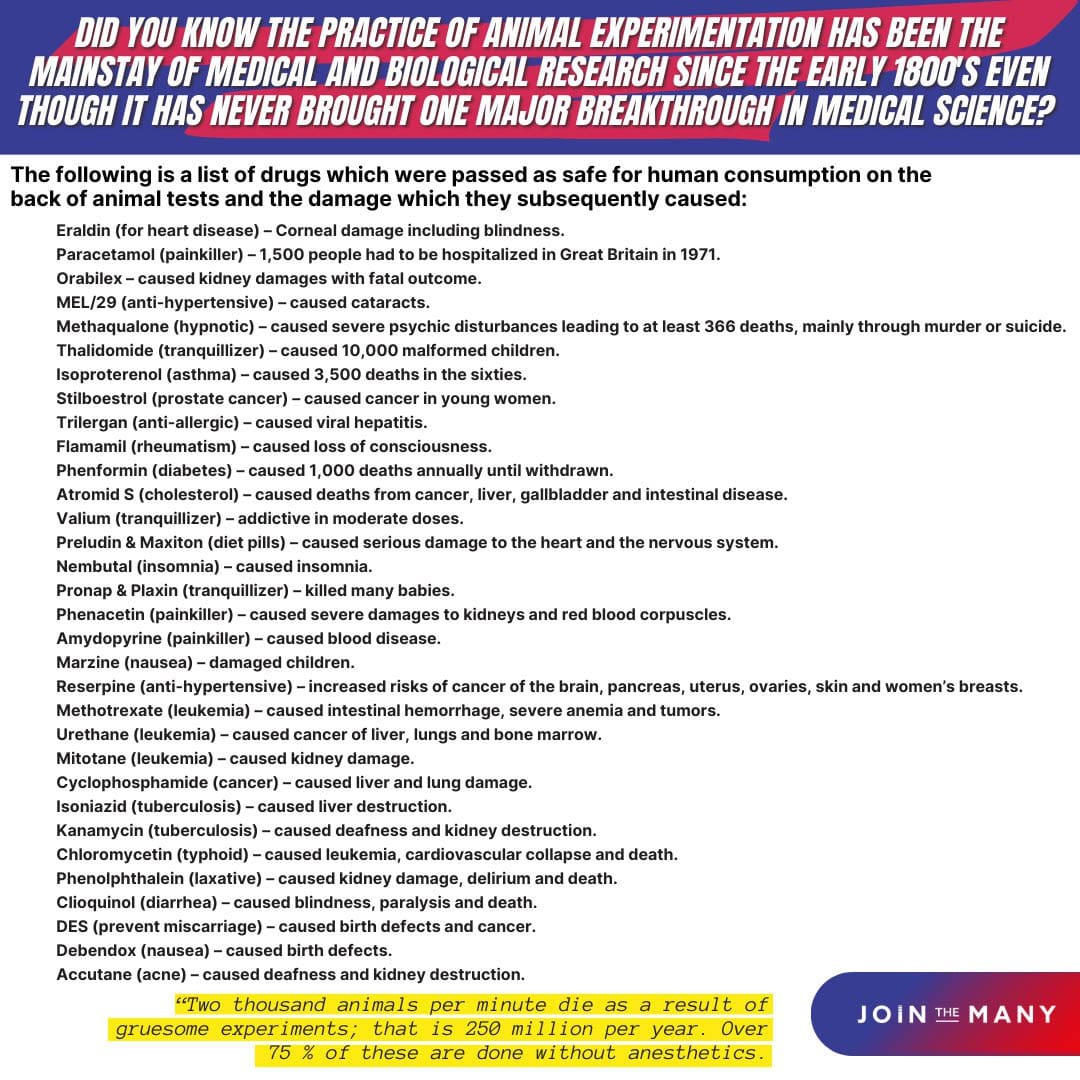
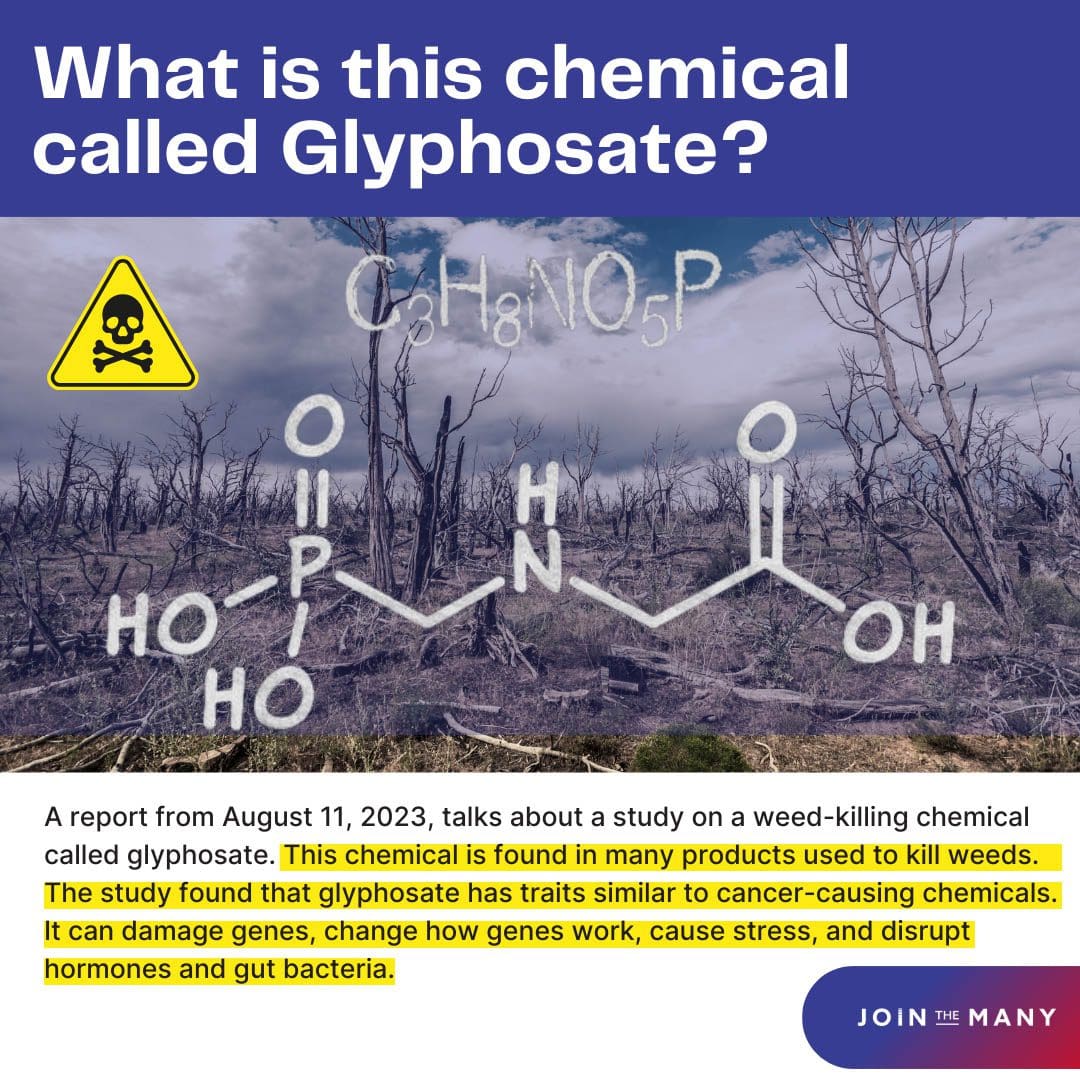
Imagine you have a garden where you grow lots of different plants, like fruits and vegetables. Sometimes, little insects and weeds (unwanted plants) can come and try to eat or take up space with the plants you want to grow. Farmers have a special spray called a pesticide, which is like a superhero shield for plants. One type of pesticide is called Roundup, and it has a special ingredient called glyphosate.
When farmers spray Roundup on their fields, it helps protect the plants they want to grow by stopping the weeds from growing and the insects from eating the plants. This way, the plants can grow big and strong without having to compete with the weeds and bugs.
But here’s the interesting part: while Roundup helps plants grow better, sometimes it can also affect the soil and the nutrients in it. Nutrients are like vitamins for plants – they help the plants stay healthy and make the fruits and veggies we like to eat full of good stuff for our bodies.
So, using Roundup can sometimes make the plants grow really well, but it might also make the fruits and veggies not as rich in nutrients as they could be. This is why some people talk about finding a balance between using pesticides to protect the plants and making sure the food we get from those plants is still really good for us.
In short, herbicides like Roundup can be like a shield to protect plants from pests, but we also need to think about making sure the food stays healthy and full of nutrients for us to eat.
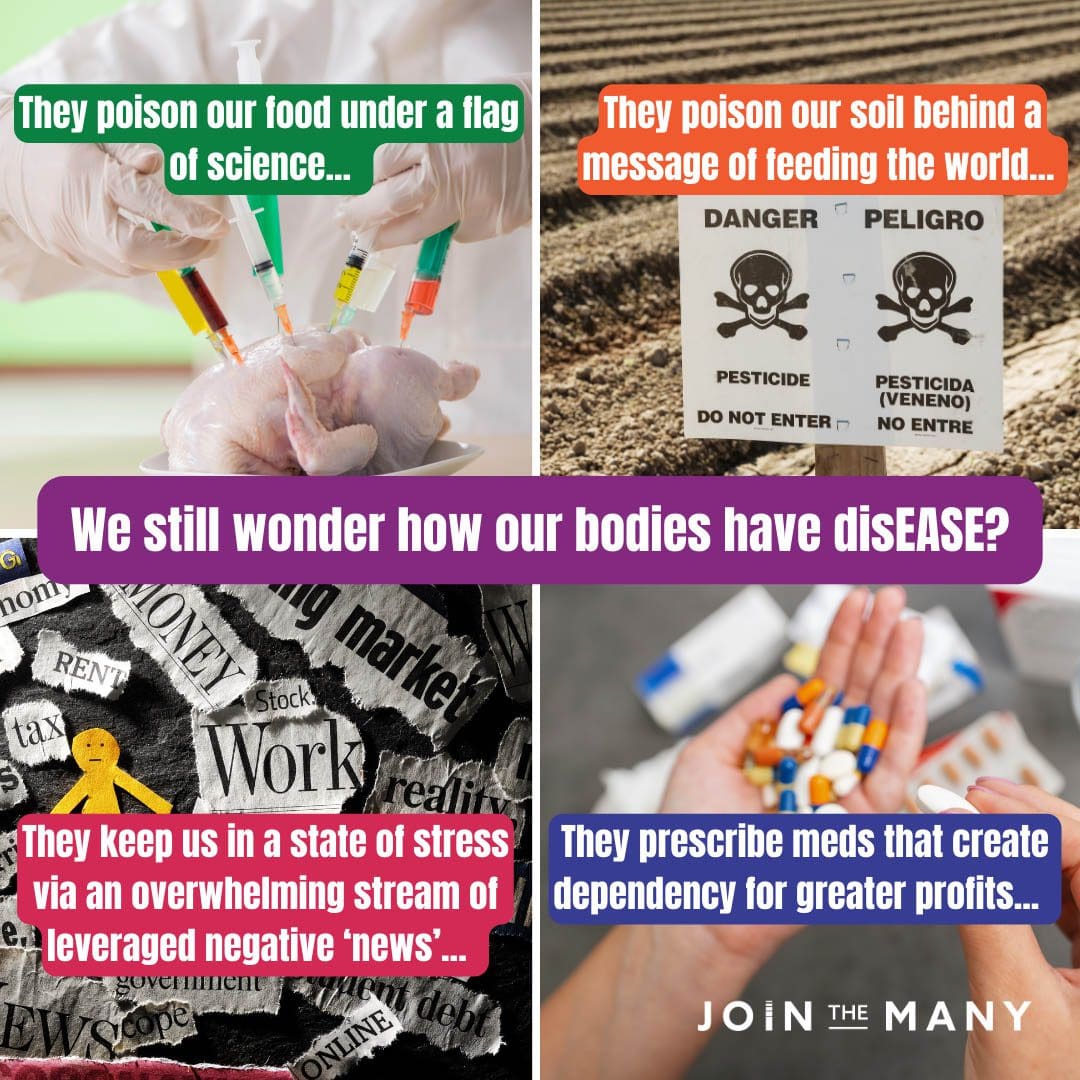
“Soil is life, so caring about soil means caring about life; it’s a simple equation. All current and future generations’ lives on earth depend on soil, so everyone should talk about soil, not only practitioners.”
Pesticides are one of the major contributors to environmental pollution, which helped create the environmental movement of the late 1960s and early 1970s. Pesticides contribute to various adverse health outcomes, including cancer, autoimmune disorders, birth defects, reproductive failures, developmental abnormalities, and learning disabilities.

Herbicides, pesticides and insecticides are killing off our core microbes. In the past 30 years, these have reduced nature’s bacteria and fungi by more than 99%, largely due to the chemicals running rampant in nature and killing anything that moves (or doesn’t move).
Natural, synthetic, and biopesticide products have all been used to control plant health problems. Each is a pesticide defined by the Environmental Protection Agency (EPA). They are also classified as herbicides, insecticides, and fungicides.
What Are Microbes?
Microbes are small organisms like bacteria and viruses that live in our bodies and around us. They help us digest food and fight off infections. Some microbes are good; some are bad; some are neutral. The balance of microbes in our bodies is called our microbiome or gut flora.

Our bodies contain trillions of microbes — more than ten times more than human cells — that help us digest food and fight infections. These microbes are also essential for keeping us healthy by creating vitamins and enzymes that our bodies need to function properly.
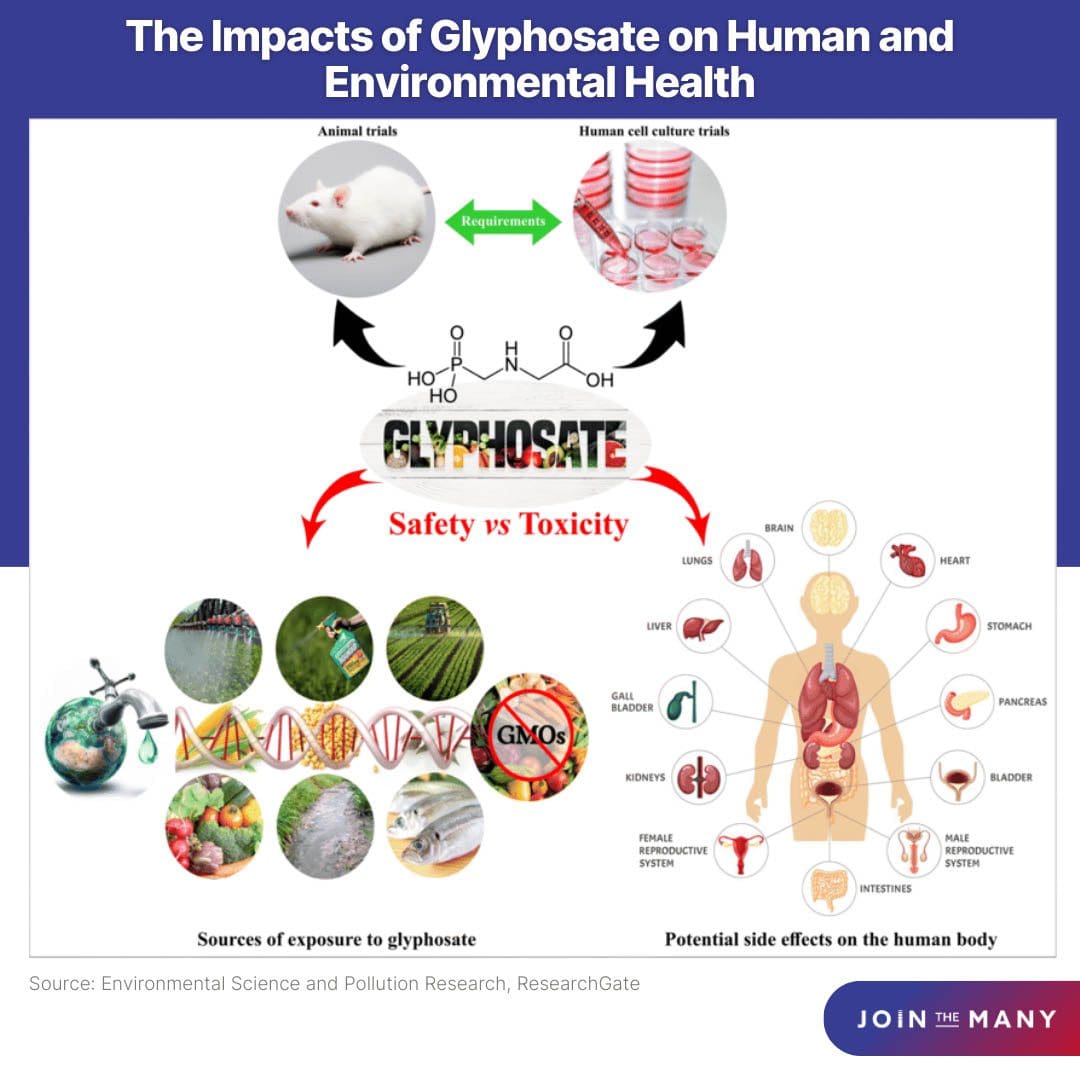
Genetically Modified Organisms (GMOs) and the use of certain agricultural practices, such as the application of harmful chemicals like herbicides, pesticides, and insecticides, as well as geoengineering efforts involving the release of heavy metals into the environment, have raised concerns about their potential negative impacts on the world. Here’s a breakdown of the potential negative effects and how to raise awareness for a more socially responsible approach:

By increasing awareness and understanding of the interconnectedness of these issues, individuals can become more proactive in advocating for responsible practices and policies that prioritize both the environment and human well-being.


Pesticide exposure is a risk factor for cancer, diabetes, cardiovascular and neurodegenerative diseases.
Kaur K, Kaur R. Occupational Pesticide Exposure, Impaired DNA Repair, and Diseases. Indian J Occup Environ Med. 2018 May-Aug;22(2):74-81. doi: 10.4103/ijoem.IJOEM_45_18. PMID: 30319227; PMCID: PMC6176703.
“Pesticides induce oxidative DNA damage, adducts, and single or double-strand DNA breaks. Various mechanisms of DNA repair deal with such damages and help maintain cell integrity. Alteration in DNA repair genes modulates the individual’s susceptibility toward DNA repair and multiple diseases.”
Source: Ledda, C., Cannizzaro, E., Cinà, D. et al. Oxidative stress and DNA damage in agricultural workers after exposure to pesticides. J Occup Med Toxicol 16, 1 (2021). https://occup-med.biomedcentral.com/articles/10.1186/s12995-020-00290-z
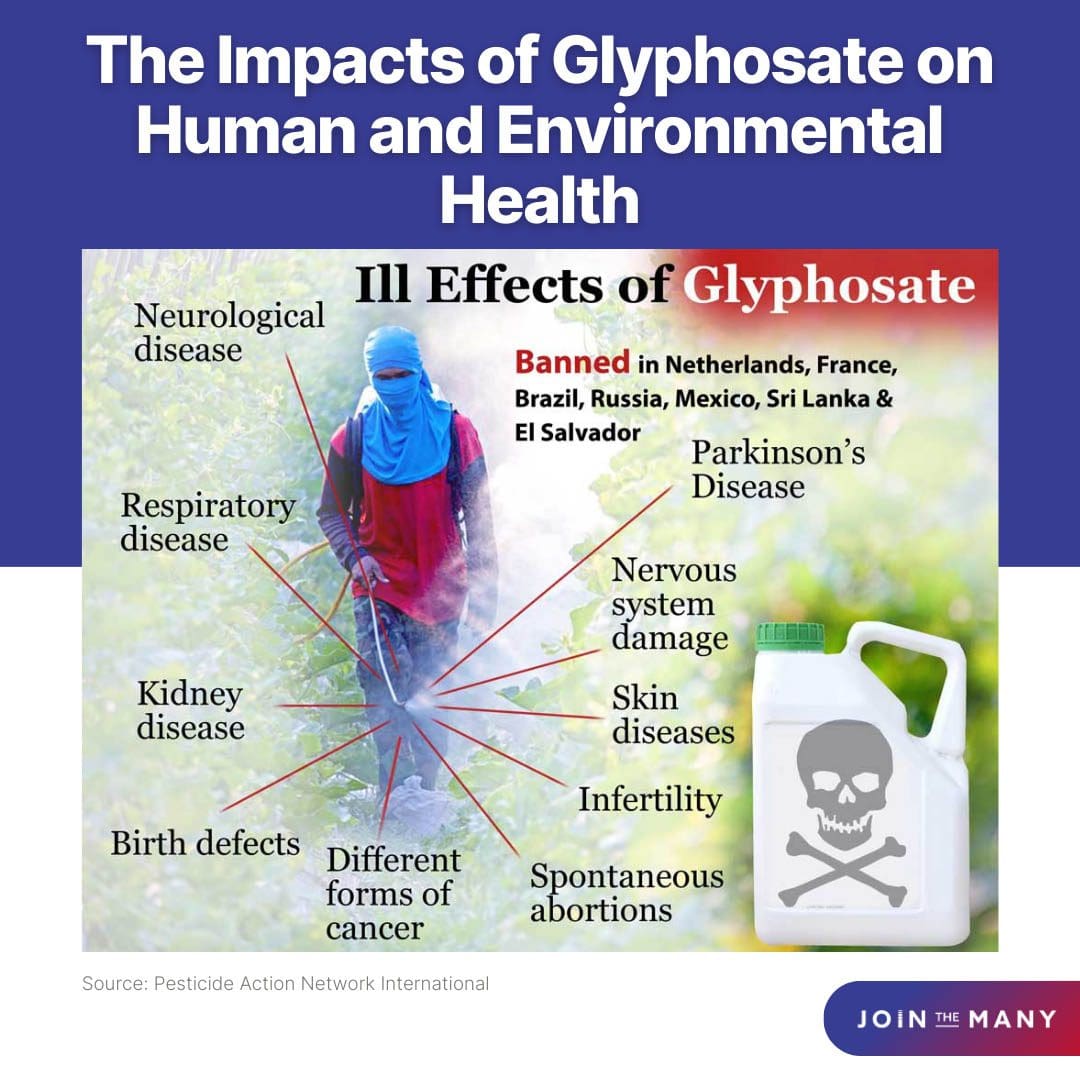
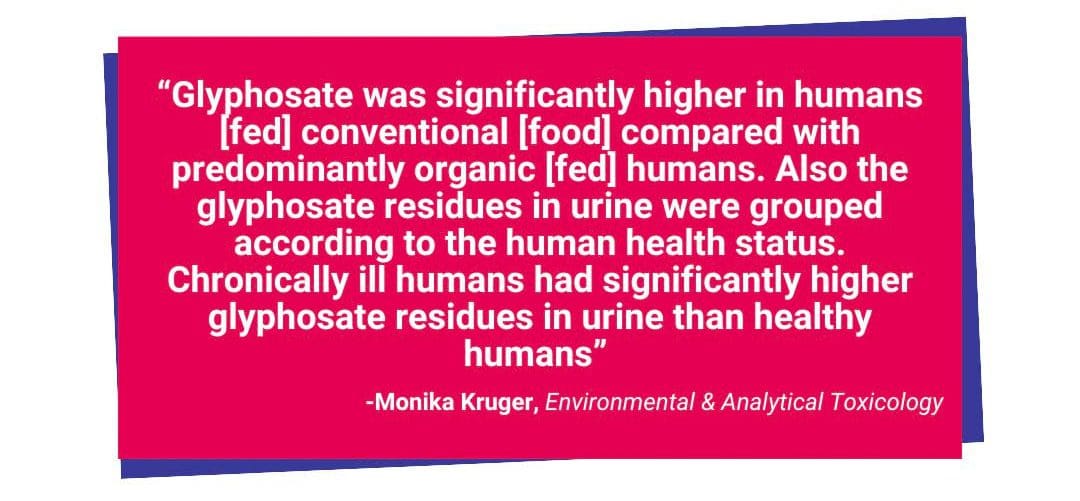
The use of pesticides can have adverse effects on human health. Short-term exposure to high levels of pesticides can cause symptoms such as headaches, dizziness, and nausea.
Long-term exposure to pesticides has been linked to an increased risk of certain cancers and neurological and reproductive effects.
Pesticides can also harm beneficial insects and animals, disrupt ecosystems, and lead to the development of pesticide-resistant pests.

It is important to use pesticides only when necessary and to follow proper application guidelines to minimize potential harm to human health and the environment.
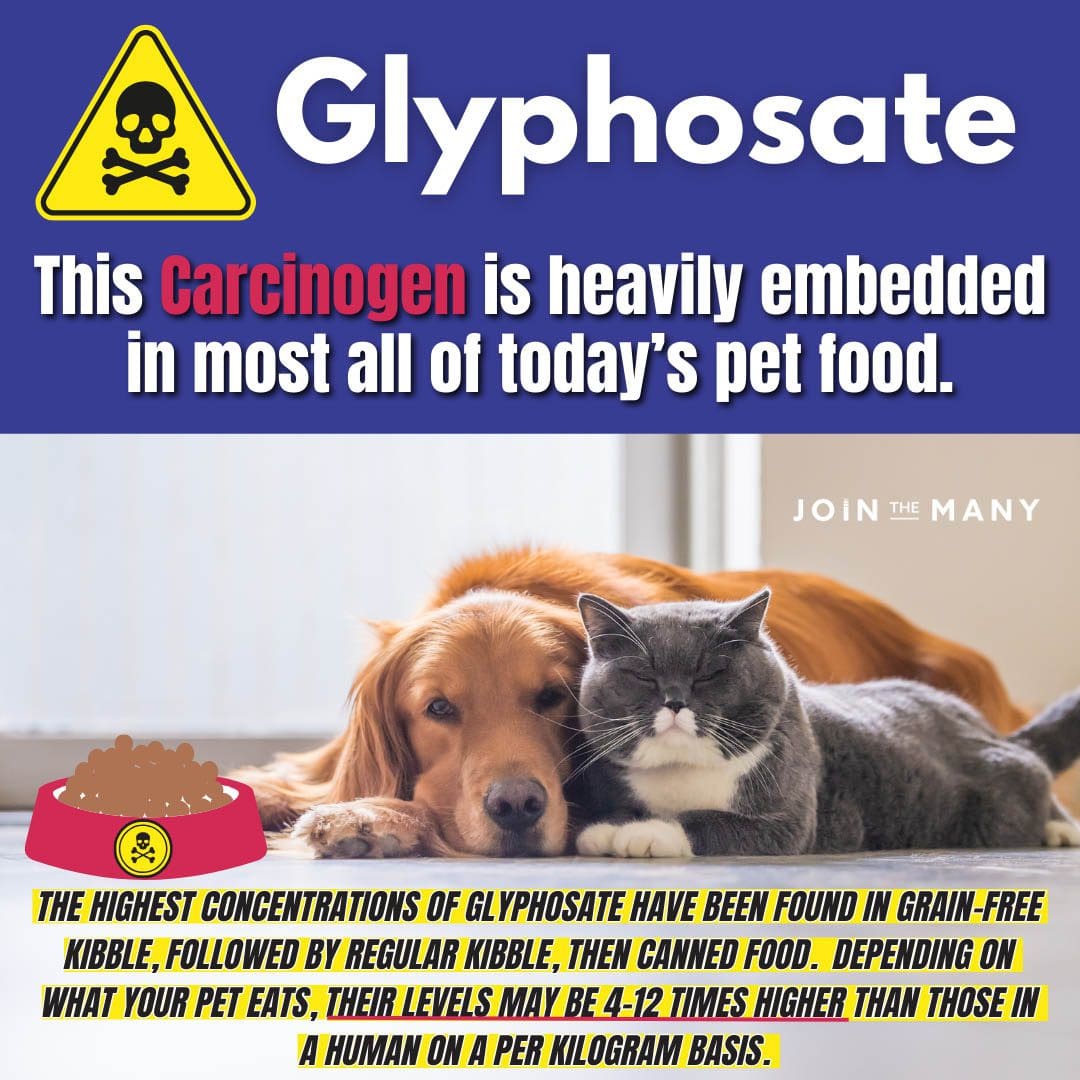
Three chemicals used as pesticides – arsenic, ethylene oxide, and lindane – are among agents rated as group one carcinogens, or conclusive causes of cancer, by the International Agency for Research on Cancer (IARC), as is the chemical 2,3,7,8-tetrachlorodibenzo-p-dioxin (TCDD), which may occur as a contaminant in certain pesticides.
There are many different types of pesticides. One common way to classify pesticides is based on their mode of action or how they kill or control pests.
It’s important to note that some pesticides can be multi-purpose and target several types of pests, and some can have multiple modes of action. Also, new types of pesticides are being developed, such as biopesticides derived from natural materials such as microorganisms. They are considered less harmful to human health and the environment.
Pesticides can enter the water supply through a variety of means. One way is through runoff, rain or irrigation water, which carries pesticides from treated fields or lawns into nearby waterways.
Pesticides can also leach into groundwater from soil treated with chemicals.
Additionally, pesticides can enter the water supply through agricultural or residential drainage systems or improper storage or disposal of pesticides.
Climate change also plays a role as the increasing frequency of extreme weather events such as heavy rainfall or floods can flush pesticides into streams and rivers, carrying them into larger bodies of water and even into the groundwater.
Pesticide toxicity can cause a wide range of symptoms depending on the type of pesticide, the amount of exposure, and the duration of exposure.
It’s important to note that some symptoms may not appear immediately after exposure and may take days or weeks to manifest. Some long-term health effects of pesticide exposure may only appear years after the exposure.
It’s also important to remember that the symptoms can vary depending on the type of pesticide, the dose, the duration of exposure, and the health status of the person exposed.
If you suspect you have been exposed to pesticides, it’s essential to seek medical attention immediately and inform the health care provider of the exposure.
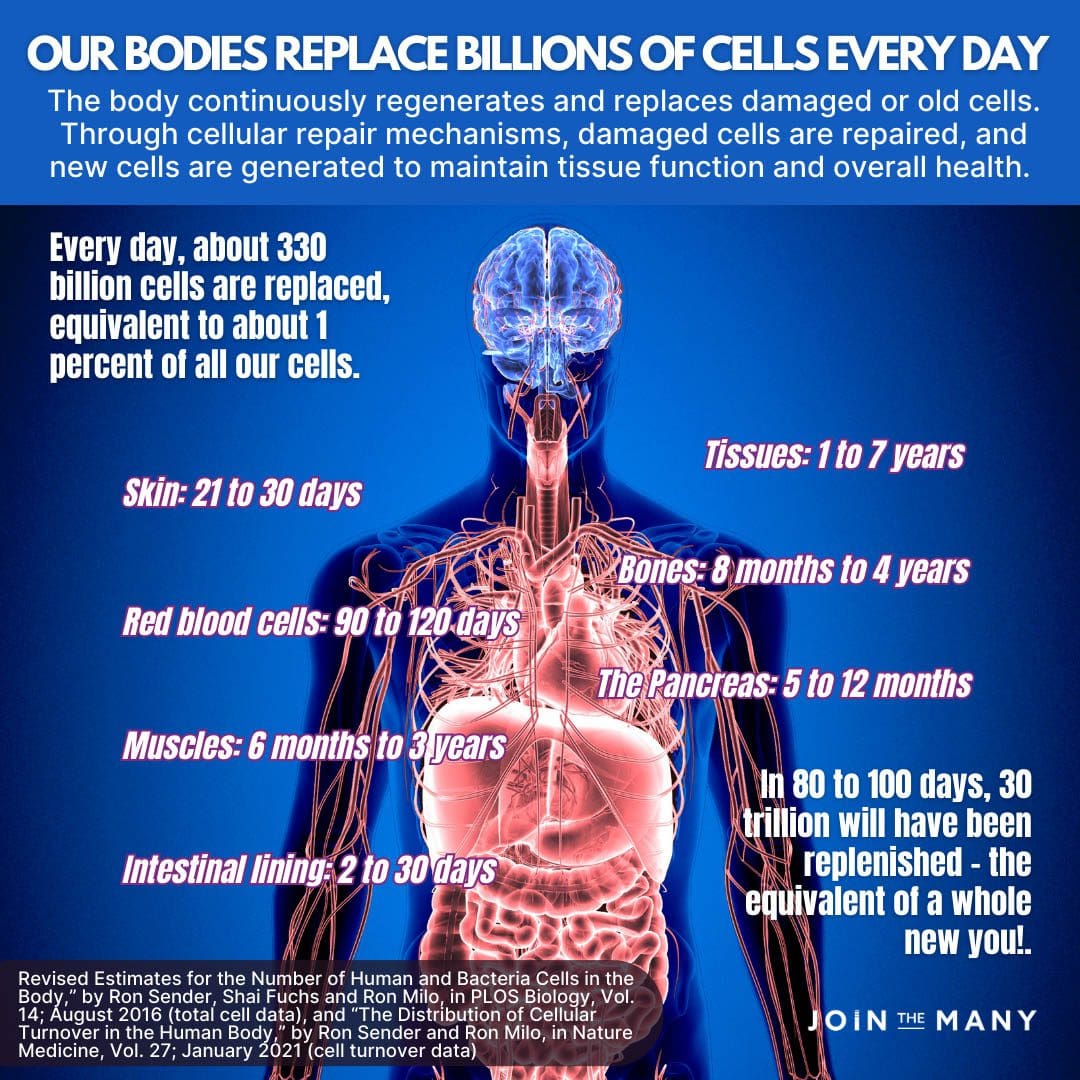
The skin and mucous membranes are the human body’s first line of defense against toxic chemicals, including those found in pesticides. These physical barriers prevent many harmful substances from entering the body.
The skin is a barrier to protect the body from harmful substances and infection. At the same time, mucous membranes in the respiratory and gastrointestinal tracts also help to filter out toxic substances. Additionally, enzymes in the liver and other organs detoxify and neutralize harmful chemicals, such as pesticides, that may enter the body.
Other mechanisms, such as the immune system, protect the body against harmful chemicals by identifying and neutralizing foreign substances.
However, these mechanisms are not specific to pesticides, and they are not a primary defense against chemical toxicity but rather a secondary instrument that is activated after exposure.
It’s important to note that these defenses can be overwhelmed if the exposure is very high, prolonged, or repeated, leading to significant health impacts.
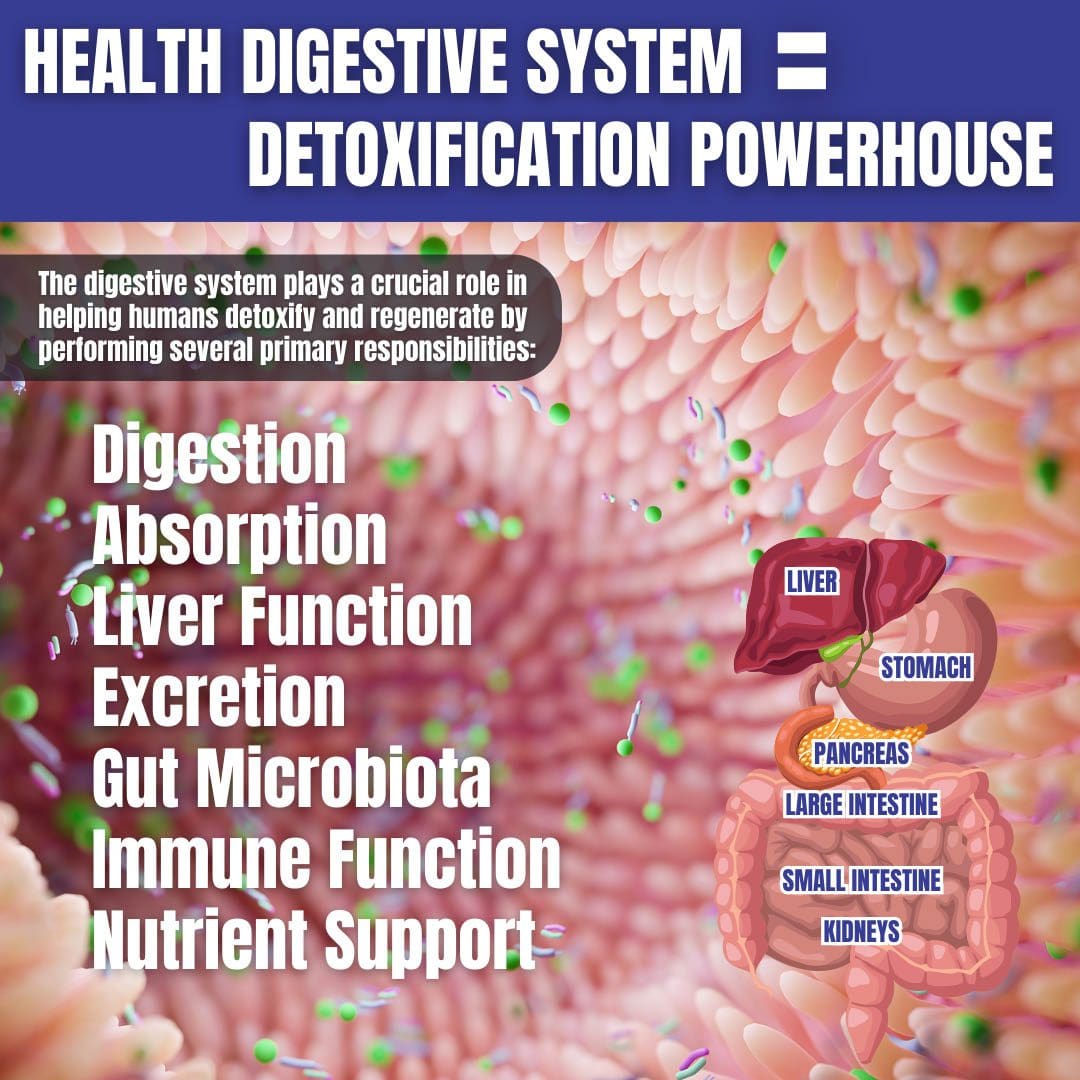
It’s important to note that maintaining a healthy gut microbiome is a complex process.
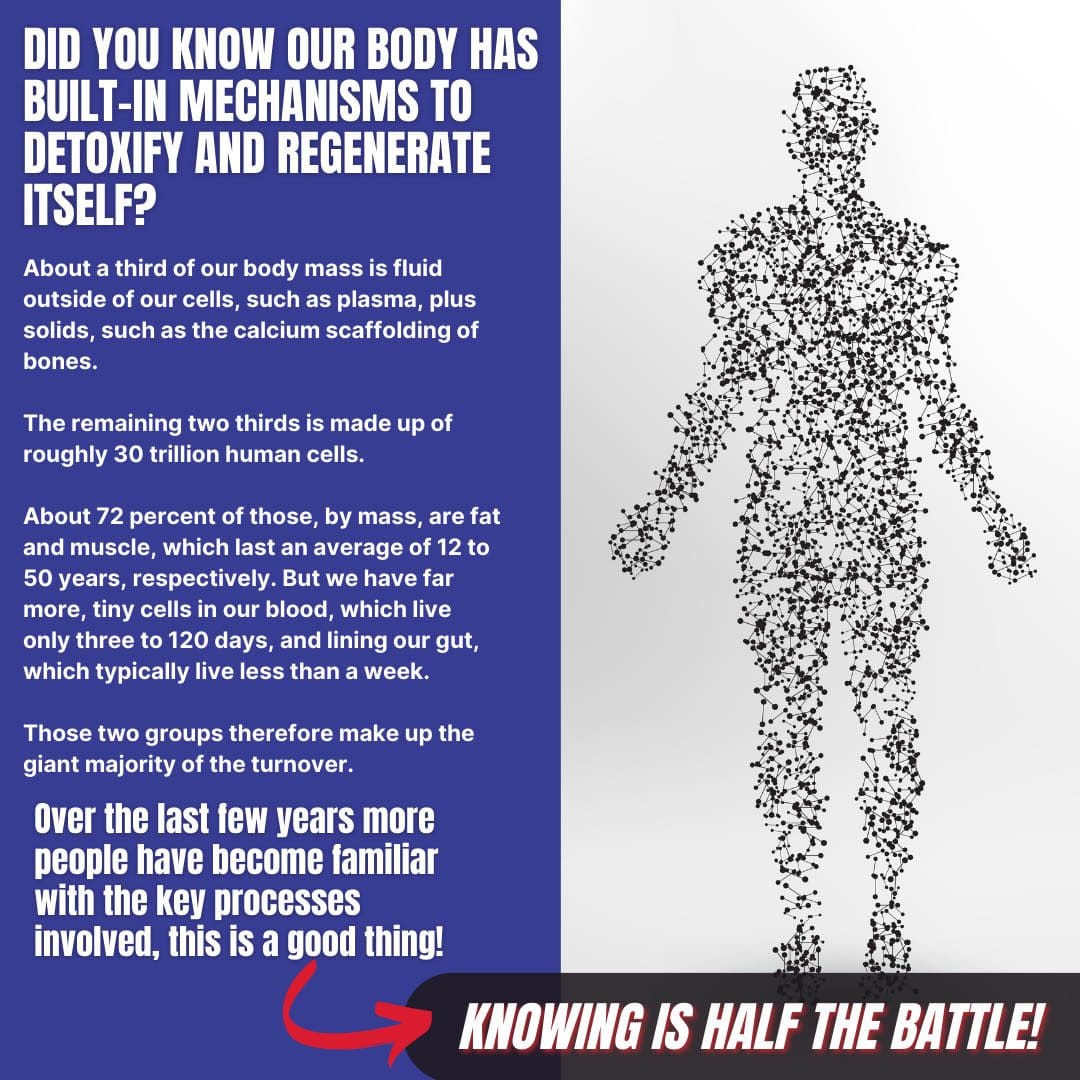
It’s not only about avoiding exposure to toxins but also about a combination of lifestyle, diet, and other factors that can positively impact the gut microbiome.
Several minerals, nutrients, and vitamins are known to positively impact the human body’s natural detoxification process of excretion.
It’s important to note that maintaining a balanced and healthy diet is essential for overall health, including the support of the body’s detoxification process.
Also, taking supplements of these nutrients may only be appropriate for some; if you have a go-to holistic, integrated healthcare professional who is familiar with your situation – we encourage you to discuss with them before starting any supplement regimen.
Magnesium is an essential mineral critical in the body’s natural detoxification process.
It’s important to note that low magnesium levels can cause several health issues, such as muscle cramps, fatigue, and constipation. These symptoms can make it harder for the body to detoxify, so it’s crucial to maintain adequate magnesium levels through a balanced diet and supplements if needed.
It’s important to note that the human body needs a sufficient amount of water intake; the recommended intake varies depending on factors such as age, sex, weight, and activity level.
Dehydration can negatively affect the body’s ability to detoxify and remove toxins, so it’s essential to drink enough water to stay hydrated.
All in all, we must be aware of pesticides’ implications on our environment and bodies.
The dangers of these toxic chemicals are far too great to ignore, as they can be both destructive and dangerous. We must stay informed of their properties and any potential health risks they may pose for us.
Additionally, education about the existence of different types of pesticides found commonly in food and water supplies must also be increased so that we can reduce the risk of contamination.
Furthermore, arming ourselves with knowledge about what steps we can take proactively to protect ourselves from toxins in pesticide exposure can do wonders for our overall well-being.
A healthy microbiome or gut flora is critical in helping us combat these dangerous chemicals, so maintaining a diet rich in minerals, nutrients, and vitamins could prove helpful.
Lastly, remember that staying hydrated is vital in helping our body detoxify itself. Awareness is half the battle in this fight against pesticides; proactive solutions and personal responsibility will always be necessary if we want to keep the environment clean and safe for generations.

“There’s a really interesting example right now where Mexico is demanding non-GMO grains from the United States and the Biden Administration is taking them to trade court… That’s like a 7 million acre opportunity for American farmers to grow something with a premium with no GMOs in it, and our government is actually pushing against it.”
NY Farmer Ben Dobson on How the U.S. Government Is Turning Our Food Supply Into Genetically Modified Commodities
The EPA determines acceptable levels of pesticides based on their potential for harm to humans and wildlife and their effectiveness at reducing crop damage from pests without posing unreasonable risks to people or animals exposed to them through food or water supply contamination or by contact with treated crops or surfaces.
The Environmental Protection Agency (EPA) sets safety limits for pesticide residues on food and water supplies. Still, these limits are based on short-term “acute” exposure studies that don’t reflect long-term chronic exposure. The EPA doesn’t consider how low-level chronic exposure might increase the risk of developing cancer or other health problems over time.
“Supporting individuals who stand up against wrongdoing, even if it temporarily affects their reputation, is essential for driving ethical change, ensuring accountability, and creating a more just and responsible society.”
Monsanto was founded in St. Louis, Missouri, by John Francis Queeny, a 30-year pharmaceutical industry veteran. Its first products were commodity food additives, like saccharin, and caffeine.
Most people recognize the name Monsanto from their internationally dominant “Herbicide / Pesticide / Insecticide” formulation, RoundUp… known for its active ingredient Glyphosate, an effective way to manage unwanted weeds while helping commercial farmers produce more predictable crop volume.
Most recently, farmers have used glyphosate growing RoundUp Ready GMO Crops as a desiccant to speed the harvest of grain crops like wheat, oats, barley, and several other crops.
They can do this by spraying fields early, essentially killing the crop so they can harvest early, producing more volume to sell.
⚠️ 1920s & 1930s —> Sulfuric Acid & Polychlorinated Biphenyls (PCBs).
⚠️ 1940s —> Dichloro-Diphenyl-Trichloroethane (DDT – The original synthetic pesticide.
Their pivot into chemical pesticides for agriculture came after WW2, more than likely due to new business relationships after some key personnel from Monsanto were recruited to work on the DaytonProject, which was an R&D project within the larger ManhattanProject, responsible for the purification of plutonium.
⚠️ In 1944, they began manufacturing the original version of our modern synthetic insecticides, DDT (dichloro-diphenyl-trichloroethane), initially used to combat malaria, typhus, and other insect-borne human diseases among military and civilian populations.
DDT’s success at destroying insect life led to updating packaging for a new consumer batch, widely used throughout the United States and expanded into other countries.
⚠️ 1960s —> Agent Orange for US Military as Vietnam Government Contractor alongside Dow Chemicals and others. However, Monsanto’s Agent Orange had Dioxin levels many times higher than Dow’s. Internal Monsanto Memos show that Monsanto knew of the problems of dioxin contamination when it sold the product to the U.S. Government for use in Vietnam.
What value proposition led to the manufacturing procurement of Agent Orange by the U.S. Government for use in Vietnam? Highly Effective Tactical Pesticide – Created to Destroy – with a Dual Purpose.
“Stripping away dense foliage areas that may conceal Viet Cong and North Vietnamese forces and destroying crops that might feed the enemy.”
During the period 1961 through 1969, 70 million kg were produced in the United States.
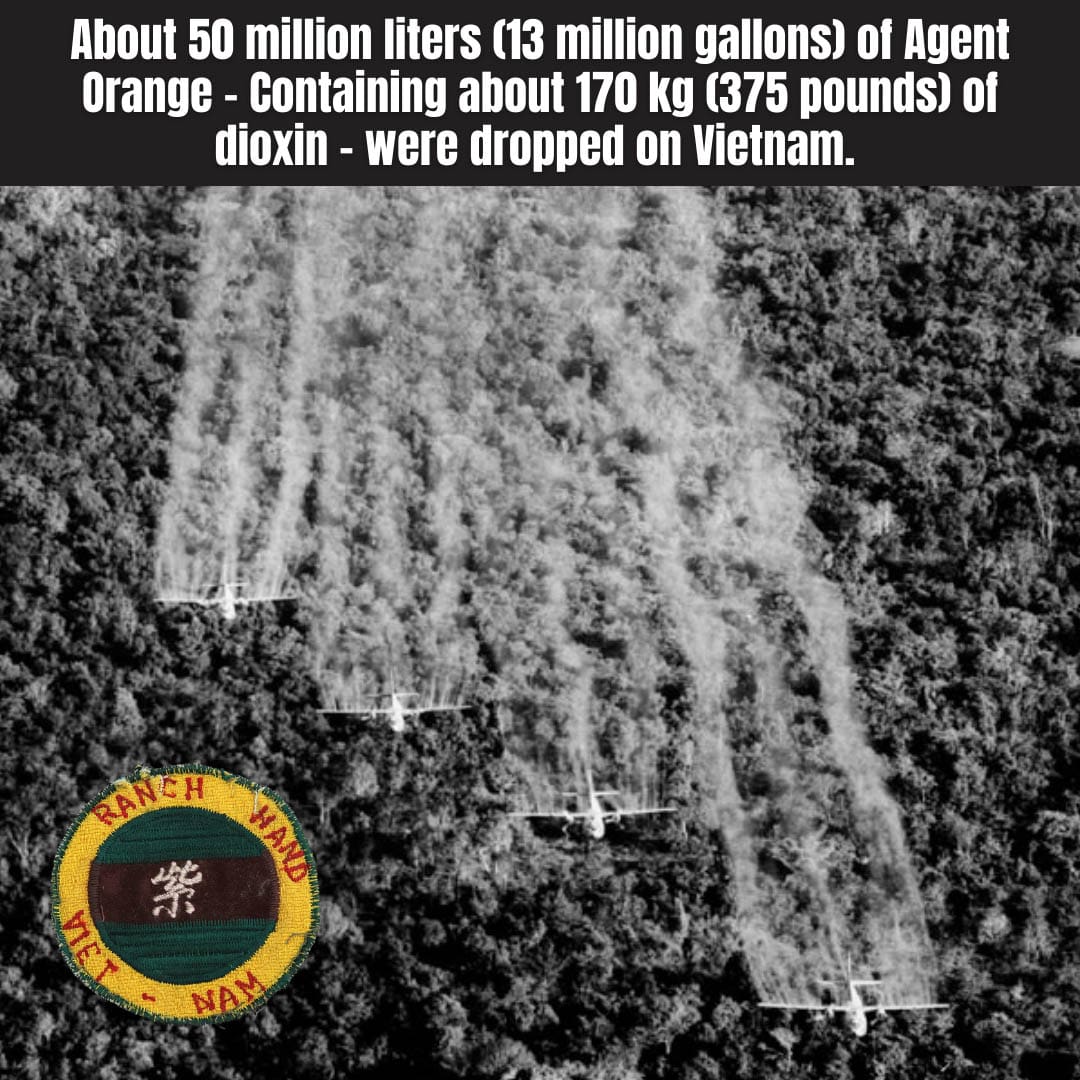
Approximately 24 million kg was procured by the United States military for use in Vietnam, 36 million kg were used in domestic herbaceous and woody plant control programs, and the remaining 10 million kg was exported to other countries.

⚠️ 1970s —> Monsanto introduces “Lasso” – A new direct-to-consumer friendly herbicide
It wasn’t until 1972 that the newly founded EPA issued a cancellation order for DDT based on its adverse environmental effects, such as those to wildlife and potential human health risks.
With key relationships in place and sustainable growth, Monsanto continued to innovate with their destructive chemical compound business.
From 1965 to 1969, they manufactured Agent Orange for the US military alongside Dow Chemicals operating as a wartime government contractor.
However, Monsanto’s Agent Orange had dioxin levels many times higher than Dow’s. Internal Monsanto Memos show that Monsanto knew of the problems of dioxin contamination when it sold the product to the U.S. Government for use in Vietnam.

The overly linear minds during that period were excited about the value proposition of stripping away dense foliage that could conceal enemy combatants.
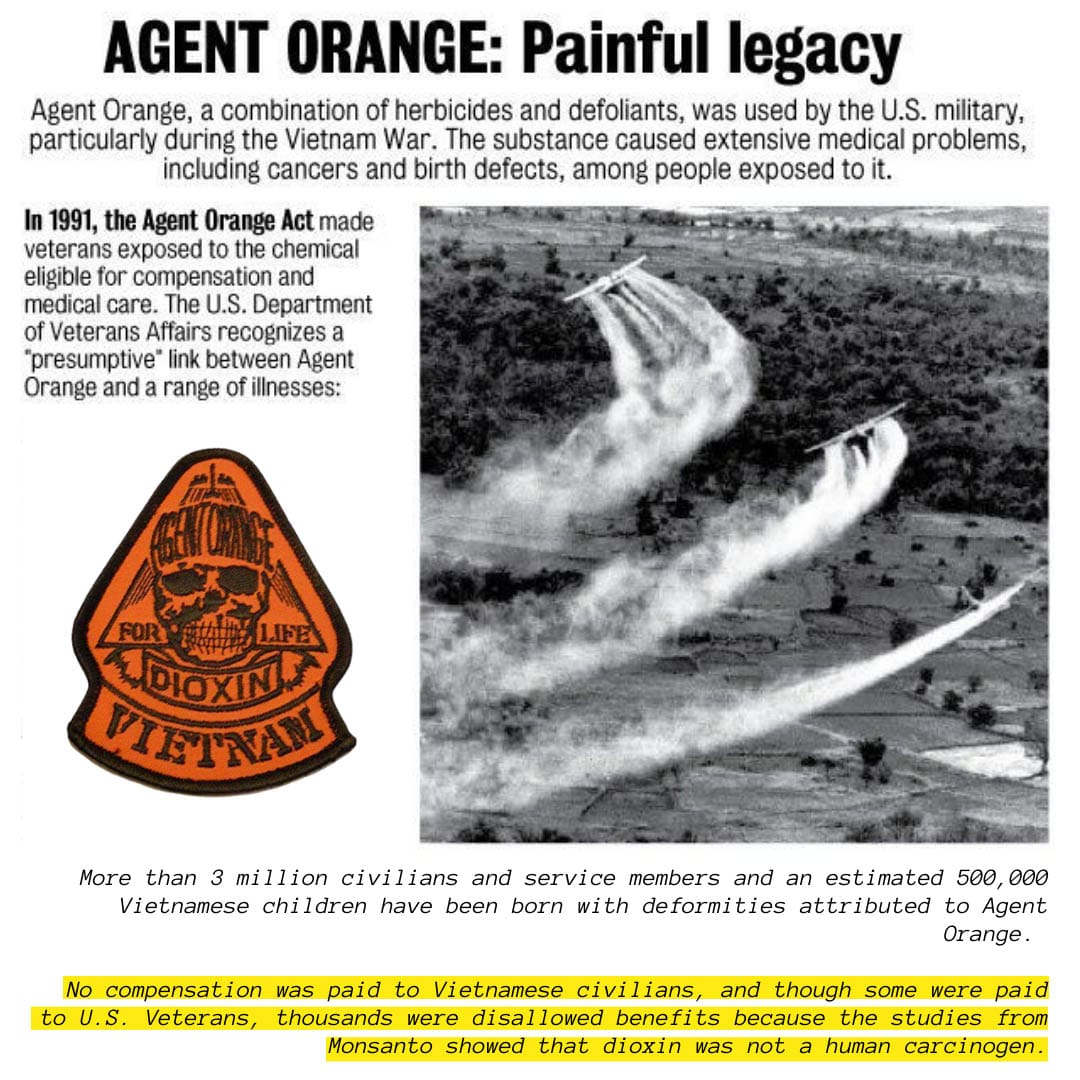
–>> The EPA discovered that Monsanto had falsified the data, and if it had been done correctly, they would have reached the opposite result.
The scientists at Monsanto continued to innovate. They found some learnings with the short-lived success of a new consumer-friendly herbicide called Lasso.
By the time Agent Orange was banned, Monsanto had already created an even better replacement.
⚠️ 1974 —> Monsanto launched the weed killer we all know today, “Roundup” (active ingredient: Glyphosate), helping Monsanto achieve the title of “World’s Largest Producer of Herbicides.”
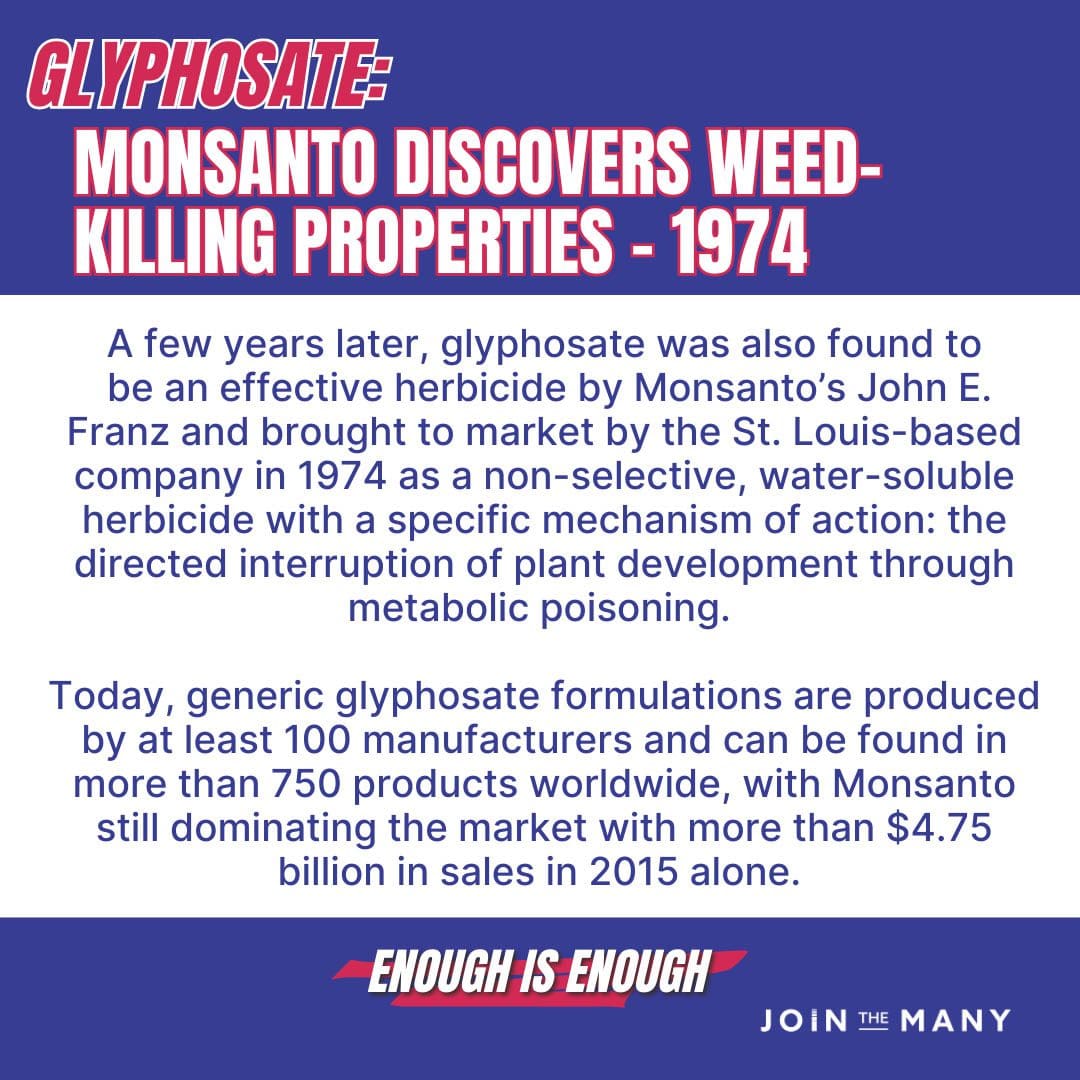
However, with more light being shined upon this winning company, Monsanto executives knew they needed to remain proactive… as the primary producer of dioxins and polychlorinated biphenyls PCBs – environmental clean-up costs and lawsuits began to cut into their bottom line.
⚠️ 1982 —> 2,000 people relocated from Times Beach, Missouri, after the area was contaminated with PCB by-product dioxin.
Monsanto began production of polychlorinated biphenyls in the United States in 1929… PCBs were an industrial wonder chemical – an oil that would not burn, was impervious to degradation, and had limitless applications… Ah… Forever Chemicals.
⚠️ 1987 —> $180 Million settlement for Vietnam War Veterans exposed to Agent Orange.
⚠️ 1990’s —> Monsanto completes acquisition of Calgene Inc., DEKALB Genetics, and other biotechnology firms, making it a leader in developing and producing genetically modified crop seeds.
⚠️ 1991 —> Fine for concealing discharge of contaminated wastewater.
⚠️ 1994 —> Regulatory approval for the first biotech product, a dairy cow hormone called Posilac. It began commercial production of BST (bovine somatropin), a synthetic supplement for dairy cows.
⚠️ 1994 —> It began commercial production of BST (bovine somatropin), a synthetic supplement for dairy cows.
⚠️ 1995 —> $41.1 million to a waste management company in Texas due to hazardous waste dumping.
⚠️ 1995 —> EPA’s Toxic Release Inventory ranks Monsanto 5th for discharging 37 million pounds of toxic chemicals into the air, land, water, and underground.
⚠️ 1996 —> Introduces first biotech crop, Roundup Ready soybeans, which tolerate spraying of Roundup herbicide, and biotech cotton engineered to resist insect damage.
⚠️ 1997 —> A report that Monsanto sold 6,000 tons of contaminated waste to Idaho fertilizer companies containing carcinogenic heavy metal cadmium.
⚠️ 1998 —> Introduces Roundup Ready corn.
⚠️ 2000 – 2002 —> Restructures in deal with Pharmacia & Upjohn; separates agri and chem businesses and becomes stand-alone agriculture company. The Pharmacia Corporation is a pharmaceutical company that by 2003 would itself become a subsidiary of Pfizer.
⚠️ 2002 —> Washington Post publishes the article, “Monsanto Hid Decades of Pollution, PCBs Drenched Ala. Town, But No One Was Ever Told.”
⚠️ 2002 – 2003 —> Jury finds Monsanto plant in Anniston, Alabama, polluted community with PCBs. Monsanto and Solutia agree to pay $600 million to settle claims brought by 20,000 Anniston residents of PCB ground and water contamination.
⚠️ 2003 —> Solutia files Chapter 11 bankruptcy.
⚠️ 2004 —> Monsanto forms American Seeds Inc. holding company for corn and soybean seed deals and begins brand acquisitions.
⚠️ 2005 —> Environmental, consumer groups question Roundup Ready crops’ safety, saying they create “super weeds,” among other problems.
⚠️ 2006 – 2007 —> Buys several regional seed companies, and cotton seed leader Delta and Pine Land Co. Competitors allege that Monsanto is gaining a monopoly on the industry.
⚠️ 2008 —> Acquires sugarcane breeding companies and a Dutch hybrid seed company. Sells Posilac business amid consumer and food industry concerns about the dairy cow hormone supplement.
⚠️ 2008 – 2009 —> U.S. Department of Justice says it is looking into monopolistic power in the U.S. seed industry.
⚠️ 2009 —> Posts record net sales of $11.7 billion and net income of $2.1 billion for fiscal 2009. Announces project to improve the living conditions of 10,000 small cotton and corn farmers in 1,100 villages in India; donates cotton technology to academic researchers.
⚠️ 2015 —> The company continues to roll out seeds engineered with new herbicide resistance, releasing dicamba-resistant cotton. Dicamba-resistant soybeans would be introduced a year later. For each product, however, the corresponding dicamba-based herbicide still has yet to be approved. Monsanto was rejected after making a $45 billion offer to buy Syngenta, a Swiss competitor that sells seeds and agricultural chemicals. Syngenta was sold in February 2016 to a Chinese company, ChemChina, for $43 billion.
⚠️ 2016 —> Bayer announces intentions to acquire Monsanto with Monsanto’s board agreeing to sell the company for $66 billion to the German pharmaceutical company.
⚠️ 2018 —> Monsanto and their increasingly popular “Ready-To-Use”, “Dual-Action,” and “Pro-Max” residential and commercial grade variations completed a $63B transaction with the BigPharma BigChemical BigAgriculture multi-national Fortune 500 conglomerate out of Germany, Bayer AG…
As we reflect on this Roundup Cancer Lawsuit, it becomes increasingly clear that it serves as a potent catalyst for addressing a much larger issue that demands our immediate attention. In doing so, we must strike a balance between holding those responsible accountable and extending our compassion to those who have been adversely affected.
Now, let’s have a reality check and engage in some candid conversation. When you fully grasp the profound impact these toxins have had on nearly every aspect of our lives, you gain a perspective on how this issue could persist. These corporations play the long game, expertly prolonging court cases and manipulating time to their advantage.
Consider the agencies responsible for “approvals” and “safety measures,” which were supposed to safeguard us from harm. Think about the hidden dangers that undermine our immune systems, leaving us vulnerable. A cancer diagnosis is no longer an immediate death sentence, thanks to medical advancements and proactive measures.
However, what can prevent someone from overcoming this challenge? Often, it’s the financial burden, the inability to stop working, and the weight of being a provider for loved ones. Now juxtapose this with the limitless resources of these corporate giants, who invest in controlling information, shaping narratives, and minimizing risks.
How many people do you know who could potentially be affected or should be taking action in a case like this? Yet, many may choose to ignore the situation out of overwhelm or opt for the comfort of ignorance. This is precisely what allows such negligent actions to persist, while these corporations receive what may seem like substantial penalties but are mere high-fives within their financial landscape.
Our duty is clear: we must prevent the mistakes that led to this situation from recurring. Our responsibility extends to our children and the generations who will inherit this planet. We’ve reached a point where taking action is no longer merely an option – it’s an imperative, a pledge to safeguard our collective future.
Remember that collective action is critical. Working together, we can positively impact the environment and move toward a future where nature thrives and we coexist harmoniously.
Onward,
We Are The Many

Complete the form below or call 888-999-2739 to find out if you qualify for compensation.
"*" indicates required fields
A Pennsylvania man was just awarded $2.25 billion after developing cancer from Bayer's Roundup weedkiller. The jury found that years of using Roundup for yard work at his house caused his non-Hodgkins lymphoma. This monumental verdict includes $250 million in compensatory damages and a staggering $2 billion in punitive damages.
Read MoreBayer was ordered on December 5th to pay nearly $3.5 million by a Philadelphia jury that found the company's Roundup weedkiller caused a woman's cancer, the latest in a string of trial losses for the company. Like most plaintiffs in Roundup cases, the plaintiff alleged in the most recent case that she developed non-Hodgkin lymphoma from exposure to the product.
Read MoreIn addition to failure to warn, the jury found Bayer responsible for design defect and negligence. After hearing arguments and closely examining the evidence, the jury sided with the plaintiffs and awarded $1.56 billion in a landmark decision and one of the largest jury awards of 2023.
Read MoreThe last two weeks of October haven’t been kind to Bayer, with courts across the country dealing massive blows to the biotech giant. Over the span of just two weeks, juries have awarded more than half a billion dollars in damages to Roundup cancer victims.
Read MoreRoundup manufacturer Bayer faces a new federal lawsuit, alleging the corporation refused to finalize a settlement payout for a non-U.S. citizen who developed cancer after using Roundup. Bayer failed to pay a $412 million agreement from its $10 billion settlement fund, claiming the victim failed to meet the terms of her settlement agreement.
Read MoreBayer and its owner, Monsanto, were hit with a fresh federal lawsuit for refusing to pay a $412 million settlement to Elvira Reyes-Hernandez, a non-U.S.-citizen plaintiff who was diagnosed with non-Hodgkin lymphoma in 2019 after exposure to Monsanto product Roundup while working on tree farms in Virginia. The lawsuit accuses the corporations of violating section 1981 of the Civil Rights Act.
Read More
People can be exposed to glyphosate through agricultural and residential use, dietary intake, and environmental contact.

Despite ongoing debate about whether Roundup causes cancer, its link to cancer has resulted in significant settlements in lawsuits against Bayer from individuals who developed cancer after using it.
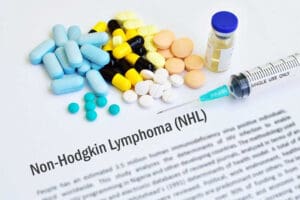
Cancers included in the Roundup lawsuit primarily involve non-Hodgkin’s lymphoma, but other cancers linked to glyphosate exposure may also be considered.
This is an active lawsuit. Stay informed on how it's unfolding.